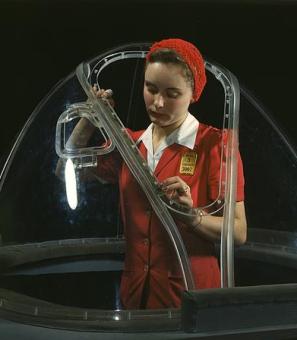Funk and the Chocolate City: How George Clinton and Parliament Funkadelic Left a Mark on DC
Uh, what's happening, CC? They still call it the White House
But that's a temporary condition, too, can you dig it, CC?
To each his reach and if I don't cop, it ain't mine to have
But I'll be reachin' for ya, 'cause I love ya, CC, right on1
So begins funk group Parliament’s ode to Washington, D.C., or, as band leader George Clinton dubs it in their 1975 album, Chocolate City.
The idea of D.C. as a “Chocolate City” has been around much longer than the witty name, which was introduced by local radio DJs in the early 1970s.2 Before the capital was even finished, the population consisted of a significant number of black citizens, both free and enslaved. And as time went on, the percentage of people of color living in D.C. steadily rose until, in 1957, “D.C. became the first large city in the United States to be majority Black.”3
But it wasn’t just that majority that made D.C. the Chocolate City. By the ‘70s, when Clinton was crooning his love for the District, it was transforming politically and culturally. Washington had attracted activists who were eager to organize the large black community (by then over 70% of the population) for change. They fought for Home Rule, the opportunity to make their own decisions for the city. And they won.
On December 24, 1973 President Nixon signed legislation that created a local government for the District and granted D.C. residents the right to elect a mayor and city council, which would operate with oversight from Congress.
Black Power activists were elected into office and became “the power structure and system” which they had fought for so long to change. City leadership finally reflected the actual population – District affairs were no longer determined solely by white Congressmen from around the country. As scholars Derek Musgrove and Chris Myers Asch note, it was “an exciting opportunity to wield black power” and the new council did not waste it.4 The activists that had fought for equal rights in the previous decades “shifted the focus of black activism away from seeking equality of opportunity for the black middle class, and toward gaining resources and control for the poor” and began “focus[ing] their attention on proportional representation, power sharing, and multiculturalism.”5 Years of activism was bearing real fruit at an unprecedented level.
In this climate, the sounds of funk music resonated. Funk was a new sound for a new generation, “an undiluted fusion of all the genres of music,” and George Clinton, along with his group Parliament-Funkadelic, was there to lead the way.6 While Clinton was not originally from D.C., he and his band forged a special relationship with the city.
Parliament released the album Chocolate City as a tribute to D.C. in 1975 and, within a few weeks, sold over 150,000 albums in the Federal City alone.7 The lyrics of the title track “encouraged its audience to embrace their neighborhoods as Whites ran toward the suburbs” and “focuse[d] on Black domination of inner cities as a positive message.”8
Chocolate City is a celebration, an invitation to a growing community to love themselves. In the world Clinton illustrates, D.C. is the inheritance of black people from the government, the “forty acres and a mule” that was promised – and now finally achieved.9 Clinton saw a world where the status quo was turned on its head. “We had put blacks in places where they had never been perceived to be.”10 The purpose of the music was “to put black people in a better place…A lot of underlying themes in black music into the ‘70s was ‘We’re going to be free.’”11 And so, while people like Walter Washington and Marion Barry were taking city office, Clinton took the next step and put black people on Capitol Hill:
Reverend Ike, Secretary of the Treasure
Richard Pryor, Minister of Education
Stevie Wonder, Secretary of Fine Arts
And Miss Aretha Franklin, the First Lady12
When asked why funk had become so popular in the 1970s, Clinton answered, “Black is what’s happening…Civil rights, the whole freedom thing has opened it up.”13 Washington especially appreciated that “whole freedom thing.”
As scholar Mia Anderson observed, Clinton and Parliament helped define the identity of D.C.’s black community – and those in other cities – in the uncertain lull following the Civil Rights Movement. “The band’s lyrics acknowledged a shift from black militancy and oppression to black voting power” (something D.C. residents were finally seeing) and the “changing view and hope of the black community that its economic and racial struggle could be eased through political activism.”14 Social and racial issues still permeated D.C. and the U.S., but the vote had been secured and the playing field had changed. Parliament-Funkadelic (and funk as a genre) reflected “the immediate after-the-movement frustrations of the people” characterized by “a paradox of social unrest and ubiquitous optimism.”15
Kenneth Carroll, a poet and lifelong resident of D.C., cited the profound influence of Parliament-Funkadelic on kids growing up in the housing projects: “Guys who literally could not read would be interpreting the pictures, the artwork [of the album covers], and they would come over [to] my crib. We’d be in my room going over what it meant…Part of the thing was that, for a lot of us in the inner city, they literally kind of opened the world up.” It helped kids in tough situations deal with real issues in a positive way. “In the framework of their music, there’s still questions of racism and economic exploitation, but also this idea that there’s a possibility of being beyond. That you can literally exist as a child of the universe somewhere, where color and class and none of that really matters. That people could be something else besides, you know, po’ niggas.”16
On the more light-hearted side of things, many young fans around the city began to dress, play, and act like the members of Parliament-Funkadelic. It seems that just about everything about P-Funk was being absorbed and displayed by the people of Washington, D.C. Would-be musicians placed ads in local papers looking for members to start “a funkadelic happening.”17 P-Funk became a culture: “I started dressing like them and everything,” said Gregory “Sugar Bear” Elliot, longtime frontman for the D.C. go-go band Experience Unlimited (E.U.). “And it worked. It added to our show, and people liked that. We had screaming guitars and that Funkadelic look.”18 The lore began to build, with some long-time fans even swearing that “the roof of the Capital Centre opened up and that Clinton’s now-famous ‘Mothership’ stage prop actually descended from the sky.”19
A P-Funk concert was a one-of-a-kind event. Over a dozen performers danced, played, and sang on stage at a time, each in a unique and unrelated costume. In fact, that was what the whole performance felt like: a handful of different dance parties and jam sessions taking place on the same stage, which somehow came together to create one sound, one experience. One D.C. journalist described a concert as more of a block party: “The rhythm throbbed and echoed through the stadium and drove the fans out of their seats until they filled the entire track area.”20
The relationship between the band and the District was symbiotic. As Washington Post reporter David Mills wrote following a 1992 show at Constitution Hall, “The people of Washington, D.C. (that is, C.C.), have had a special vibe going on with George and his traveling musical madhouse – Parliament-Funkadelic – since far ago in the ‘70s, back before the band could’ve even dreamed about the gold records and big-buck arena shows to come, back when they were playing homecoming gigs.”21 Show after show in venues around the city sold out as the band kept returning to their favorite fans. To bassist and singer Bootsy Collins, the reason was simple: “Y’all know this is our home. Chocolate City – home of the P-Funk.”22
Even the Mothership, the giant spaceship which seemed to come down from the sky at shows, had its own D.C. connections. The pricey stage prop sent fans into a new level of frenzy as the musicians “summoned” it mid-show, complete with glowing lights and pyrotechnics. Once the ship landed, George Clinton himself emerged, dressed as Dr. Funkenstein, one of several reoccurring characters in P-Funk lore.
Eventually, however, the Mothership became too expensive to maintain, move, and operate. Darryll Brooks, one of the band’s promoters, ended up storing it in his mother’s garage in Clinton, MD. After six months, she had had enough and demanded that it be moved elsewhere. Brooks couldn’t get in touch with any band members, so he sent it to a junk yard in Prince George’s County in Maryland.23 After that though, the Mothership disappeared.
No one knows what happened to the massive prop.24 Was it stolen? Taken apart? Burned? Is it still sitting somewhere, waiting to be rediscovered? Whatever might have happened to the original, a new Mothership was built in the mid ‘90s and used by the band for several more years before being tucked away in a storage unit in D.C. This time, the owners of the storage facility decided to make use of it themselves, opening the unit up to fans, turning on the ship, and hosting dance parties on the weekends. Clinton didn’t like that and had the replacement prop moved to his home in Tallahassee, Florida.25
In 2011, Clinton decided to donate the second Mothership to the Smithsonian’s National Museum of African American History and Culture which would open in 2015.26 The Mothership was more than just a big flashy hunk of metal; it served as “a cosmic metaphor for the sense of possibility that followed the civil rights movement,” something that the museum now highlights in its exhibit Musical Crossroads.27
Since Chocolate City was released in 1975, the band has changed, and so have its fans. Modern shows “are a family affair” with the original members’ own children and grandchildren involved onstage and multiple generations of enthusiasts in the audience – “a delightful mix of the aged and the not-so-aged, all races and walks of life, but essentially the young at heart.”28 P-Funk continues to return to D.C., having performed their latest show on May 19th, 2024 at the 9:30 Club. The special connection has lasted for over 50 years by now and is still going strong. As Clinton says in Chocolate City, “God bless CC.”29
Note: The DC Commission for Arts & Humanities is hosting “A Toast to the Boogie: Art in the Name of Funk(adelic),” an exhibit featuring “original artworks responding to the past, present, and future of funk music, psychedelic rock, and the cultural movements they inspire” by D.C. artists. Also on display will be new archival work and memorabilia from George Clinton’s family. While the chance to submit artwork has passed, there’s still an opportunity to view the collection. The exhibit will open on June 27th and run through August 16th, 2024 in the CAH’s exhibition space in the lobby of 200 I (Eye) St SE, Washington DC.30
Footnotes
- 1
“Chocolate City Lyrics by Parliament,” Lyric Advisor, accessed May 28, 2024.
- 2
Chris Myers Asch and George Derek Musgrove, Chocolate City : A History of Race and Democracy in the Nation’s Capital (Chapel Hill : The University of North Carolina Press, 2017), 381.
- 3
Philip Bump, “No Longer ‘Chocolate City,’ D.C. Sees Calls for Statehood Grow Louder,” Washington Post, March 22, 2021.
- 4 Asch and Musgrove, Chocolate City, 380.
- 5
George Derek Musgrove, “Black Power in Washington D.C.,” accessed June 6, 2024.
- 6
The Silence In Between (CMG International, 2009), loc. 0:16:40.
- 7
Parliament Funkadelic: One Nation Under A Groove, 2005, loc. 0:24:20.
- 8 Kesha M. Morant, “Language in Action: Funk Music as the Critical Voice of a Post—Civil Rights Movement Counterculture,” Journal of Black Studies 42, no. 1 (2011): 78–79.
- 9 “Chocolate City Lyrics by Parliament.”
- 10
Keith Harriston, “Forty Years Later, George Clinton’s Mothership Is Still Landing,” Andscape (blog), October 2, 2017.
- 11 Harriston.
- 12 “Chocolate City Lyrics by Parliament.”
- 13
Abe Peck, “It’s Second Coming for Music of Funk Bands,” The Free Lance-Star, December 31, 1976.
- 14 Mia L. Anderson, “‘I Dig You, Chocolate City’: ‘Ebony’ and ‘Sepia’ Magazines’ Coverage of Black Political Progress, 1971–1977,” Journal of African American Studies 19, no. 4 (2015): 399, 407.
- 15 Morant, “Language in Action,” 75.
- 16
David Mills, “The P-Funk Flashback,” Washington Post, October 22, 1992.
- 17
“Musicians Wanted Classified Ad,” Washington Star, May 3, 1976.
- 18 Mills, “The P-Funk Flashback.”
- 19 Mills, "The P-Funk Flashback.”
- 20
Len Cohen, “Concert Became Block Party,” Washington Star, June 4, 1973.
- 21 Mills, “The P-Funk Flashback.”
- 22 Mills, “The P-Funk Flashback.”
- 23
Jeff Campagna, “Smithsonian Wants George Clinton’s Funk,” Smithsonian Magazine, June 15, 2011.
- 24
“Where in the World Is Parliament-Funkadelic’s Mothership?,” Portable Press, March 23, 2015.
- 25
Kirstin Fawcett, “Watch George Clinton’s P-Funk Mothership Get Reassembled For Its Museum Debut,” Smithsonian Magazine, June 14, 2014.
- 26
Chris Richards, “Smithsonian Acquires Parliament-Funkadelic Mothership,” Washington Post (blog), May 19, 2011.
- 27
Richards; “The Mothership, a Gift of Love to the Planet,” National Museum of African American History and Culture, accessed May 30, 2024.
- 28
Kimberly Uslin, “The Beat Review: George Clinton & Parliament-Funkadelic,” Baltimore Style (blog), February 28, 2018; William Powell, “Review: ‘George Clinton and Parliament Funkadelic’ Funk Up the Howard Theatre,” SpearHead, February 16, 2018.
- 29 “Chocolate City Lyrics by Parliament.”
- 30
“A Toast To The Boogie: Art in The Name of Funk(adelic) Call for Artworks,” DC Commission for Arts & Humanities, accessed June 3, 2024.


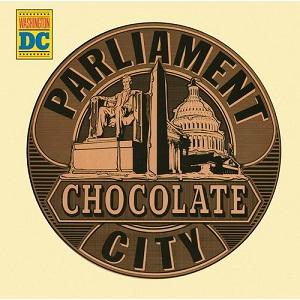
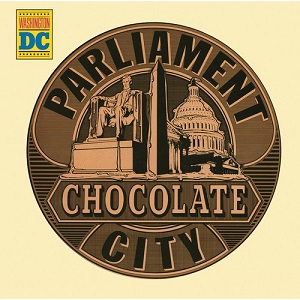


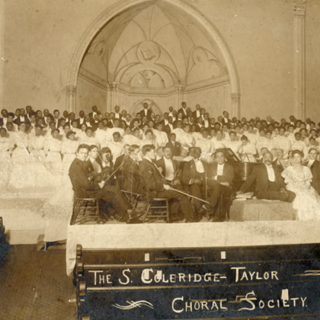
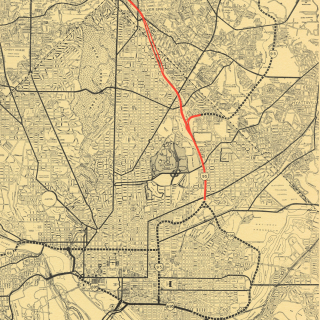
![“The restored Lincoln Theatre, once a premier African-American entertainment venue, Washington, D.C.” (Photo Source: The Library of Congress) Highsmith, Carol M, photographer. The restored Lincoln Theatre, once a premier African-American entertainment venue, Washington, D.C. United States Washington D.C, None. [Between 1980 and 2006] Photograph. https://www.loc.gov/item/2011636050/. “The restored Lincoln Theatre, once a premier African-American entertainment venue, Washington, D.C.” (Photo Source: The Library of Congress) Highsmith, Carol M, photographer. The restored Lincoln Theatre, once a premier African-American entertainment venue, Washington, D.C. United States Washington D.C, None. [Between 1980 and 2006] Photograph. https://www.loc.gov/item/2011636050/.](/sites/default/files/styles/crop_320x320/public/17856v.jpg?itok=KiWAaHRq)
![Sketch of the mythical fuan by Pearson Scott Foresman. [Source: Wikipedia]](/sites/default/files/styles/crop_320x320/public/2023-10/Goatman_Wikipedia_Faun_2_%28PSF%29.png?h=64a074ff&itok=C9Qh-PE1)











